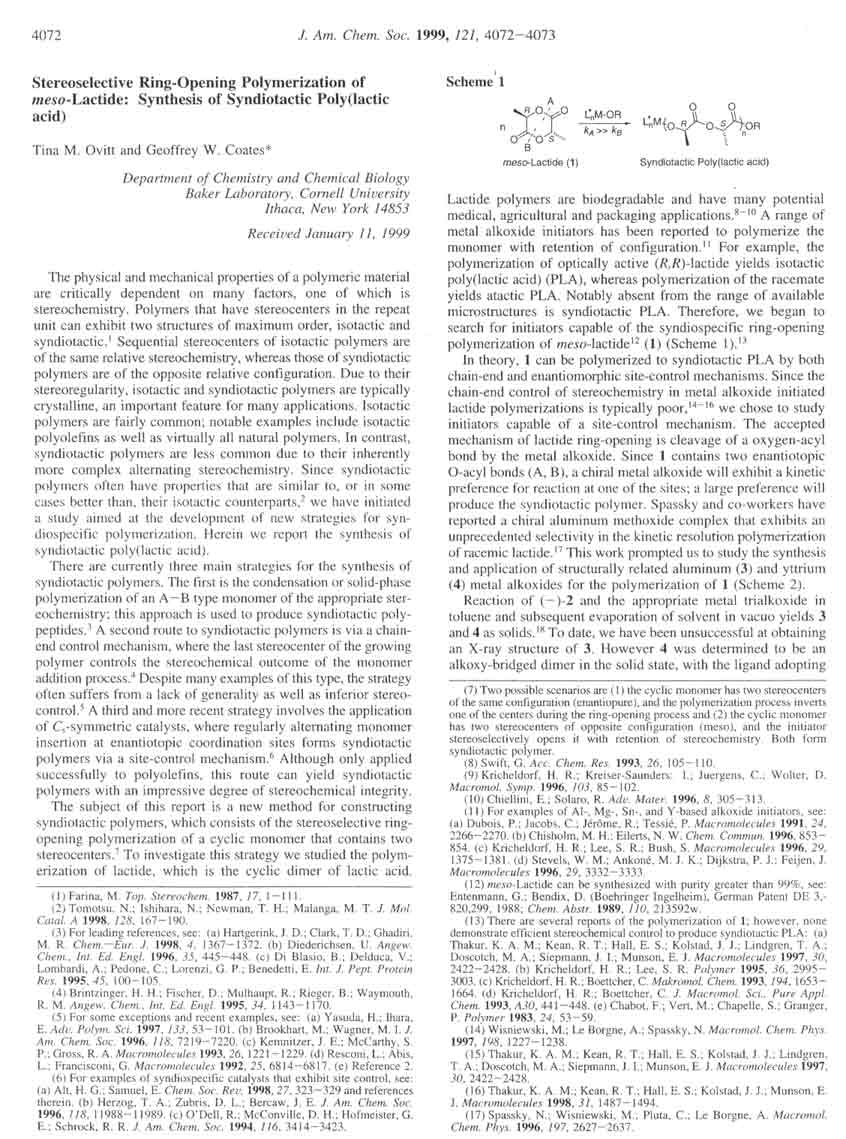PLA
PLA
Polylactic acid (PLA) is a bio-degradable polymer that can be produced from lactic acid, which can be fermented from crops such as maize. This makes it an ideal candidate for use in certain energy rich, cash poor areas of the world.
It is harder then PTFE and melts at a lower temperature (around 170°C to 210°C), so is potentially a very useful material. It does exhibit higher friction than PTFE however.
For more details, see the Wikipedia entry on Polylactic acid
Availability
New Zealand
We were fortunate to be supplied a 10kg bag of PLA 4042D by Convex Plastics Ltd. in New Zealand for research purposes.
USA
Several resellers have popped up and are supplying two different varieties of PLA
Ultimachine - http://ultimachine.com/ Green, Black, Natural 4042D in 5lb coils
Makerbot - http://store.makerbot.com/ Natural 4032D in 5 coils.
Makergear - http://makergear.com/ Green, Black, Natural 4032D and 4042D in 5 lb coils and lb packs
Synthesis
A crude form of PLA can be produced by simply heating powdered lactic acid with powdered stannous chloride - commonly used in pottery glazes - in a test tube. Extracting it from the test tube afterwards is left as an excercise for the diligent student.
See papers in footnote for further details.
Usage
PLA is the ideal material for a Mendel RepRap. It is dimensionally stable, so there is no need for a heated bed. It is relatively inexpensive, and is not hard to source in filament form.
It does require some torque to move PLA through an extruder, so it is recommended that you use a Geared_Nema17_Extruder or Geared_Nema17_Extruder_Driver vs the stock mendel extruder.
Depending on which material you use, you should adjust your heat accordingly.
4042D should extrude at 190
4032D requires higher temperatures and may need to be set as high as 230
There has been some evidence that pigment may affect extrusion width. If you are switching plastics a lot, it is a good idea to measure the extrusion before going through the toolpath process.
Papers etc
- [[File:PLA-kim-23-2-6-98033.pdf: Synthesis, Characterization and in Vitro Degradation of Poly(DL-Lactide)/Poly(DL-Lactide-co-Glycolide) Films.|thumb]]
- [[File:PLA-v30 327 334.pdf: Synthesis and Characterization of Poly(L-lactide-co-ε-caprolactone) Copolymers: Effects of Stannous Octoate Initiator and Diethylene Glycol Coinitiator Concentrations|thumb]]
- [[File:PLA-DiscreteYttriumComplexesasLactidePolymerizationCatalysts.pdf: Discrete Yttrium(III) Complexes as Lactide Polymerization Catalysts|thumb]]
- Stereoselective Ring-Opening Polymerization of meso-Lactide: Synthesis of Syndiotactic Poly(lactic acid) [[
 , Page 2, Addendum|thumb]]
, Page 2, Addendum|thumb]]
- Plastics from Renewable Materials A Royal Society of Chemistry educational document giving details of how to synthesise many polymers, including PLA.